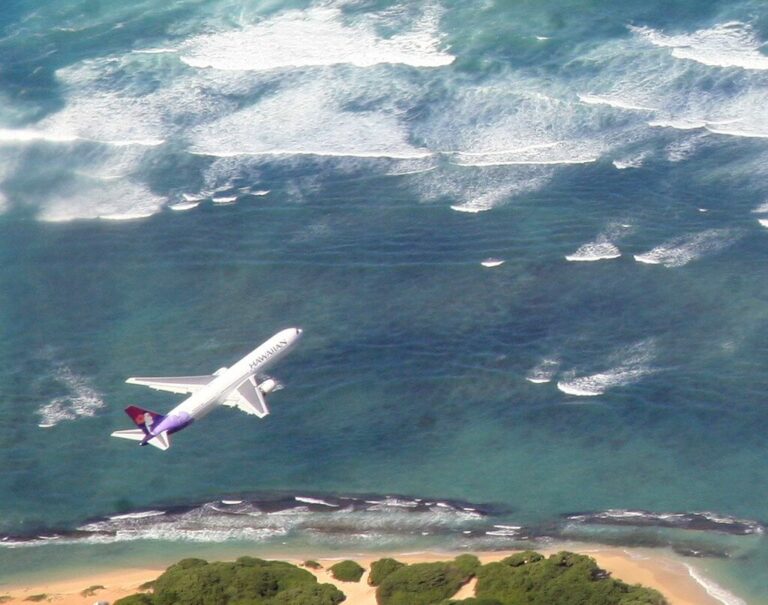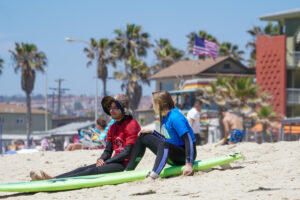Tips for Big Wave Surfers
There are surfers, and there are surfers. There are waves, and there are waves. We ride the foam. They ride the curves, the barrels, the titans. The water barely reaches over our heads. They traverse rippling walls. We’re both skilled and capable of doing something most people only dream of, and we’ve both spent years perfecting our technique. But what they do is the world’s idea of what it means to be a surfer. Those foaming beasts are what a wave is supposed to look like, teasing us, urging us forward.
We watch these geniuses, who’ve somehow managed to conquer the tide. We spend hours on YouTube, laughing, studying, talking about wipeouts, and pretending to be one of them. But deep down we know there’s a rift between us.
Big wave surfers have something we don’t. They’re faster, stronger. They can stay underwater longer. To some members of the uninitiated, it might look easy; it’s just water after all. But those who have been out there in the deep, we know. It’s like they’re superhuman, and we’re just one of the rabble.
Still, there are ways to join their ranks. Everyone starts down the same path. We can get there, and if we work hard enough, we will. But we have a lot to learn first. Let’s go over what it takes, define the path, and push those who strive for more to take it.

Lauba House / Flickr
Train Yourself
If we want to become big wave surfers, we have to accept that we’re inadequate. We’re not born capable of riding giants. We have to train our bodies and minds just to have the capacity to survive.
Big waves have enough force to snap a man’s neck. They can hold us down underwater for impossible amounts of time. The truth is they’re not actually safe. But it is possible to gain the skills necessary to survive the majority of the hazards we come up against–the worst of which is the hold-down.
In order to ride big waves we have to learn how to stay underwater longer. In order to do that, we have to increase our lung capacity, and we have to learn how to conserve oxygen; otherwise, we’ll drown in conditions that most big wave surfers would survive.
There are exercises that we can start with, such as rib breathing and diaphragmatic breathing. These work core muscles that will in turn allow our lungs to take in more air. Regular meditation and yoga are also essential, because they focus on breathing as well as focusing the mind.
Believe it or not, the proper state of mind is integral to withstanding the hold-down. When we’re underwater, we tend to panic, which could cause us to take in air. Panicking also raises our heart rate, which means we’ll use more oxygen–a potentially fatal occurence. We need to conserve as much oxygen as we can underwater. Big wave surfers have all sorts of tricks to do that. They’ll avoid physical activity when they’re under to save their breath, meditate before a session, even smile to control their emotions.
Try practicing staying underwater for long periods of time. Underwater rock running is a common exercise. Grab a rock and run at the bottom of the ocean floor. Eventually, it’ll be easier to keep running. This is a great way to prepare for the hold-down.
Do all of this in conjunction with swimming exercises, paddling, floating–anything to get comfortable in the water, build muscle, and make it easier to maneuver. Big wave surfers have to be efficient and fast. Speed and ease of movement are essential. We won’t be ready until we can handle the sea easily as a fish.

Steve Jurvetson / Flickr
Know Your Surroundings
Before surfing a new beach it’s always important to survey the surroundings, especially when the waves are higher than 20 feet. This could mean the difference between the ride of a lifetime and waking up in the hospital, or worse.
Watch the other surfers–good surfers; they’re some of our best signals. They can show us where to paddle out and where the currents are located. Try to gauge where they’re going, when they’re holding back, how they’re maneuvering when they paddle, where they’re paddling, and if they’re compensating somehow when they do. This is a good indication of where the currents are.
Watch the waves. Learn where they break and how they break. Do they break to the left, or do they break to the right? What about the center? Learning the wave pattern will help to know how to maneuver your board when it comes time to ride.
Learn about the ocean floor. Many big wave beaches have horrific conditions–sharp reefs, rocks, and kelp beds. Many first-time surfers in Hawaii will go wild. They’ll paddle out, catch a wave, and resurface covered in blood from the reefs. Others don’t come back at all.
Do some homework. Don’t skimp, and don’t just try to learn what’s out there. Know the specific lay of the land, where to go and where not to go. There’s far too much at risk. Big wave surfers are known to have some nasty wipeouts, and more than a few have died from hitting their heads on a rock bed or slicing themselves open.
Go Prepared
If more surfers went out on the water prepared, more would be alive. There would be less concussions, less drownings, and less oxygen deprivation, and they’d still be riding the waves today. But they’re not. Surf culture seems to have an aversion to safety gear, even the most basic, life-saving measure.
Wear a helmet. We’ve gone over hazardous underwater conditions, the rocks and reefs. We know what can happen if we hit them too hard. Unfortunately, a lot of big wave surfers don’t wear a helmet at all. They know how important it is. But it’s just not their style. They often wait until they get hurt to take that precaution. Ignore the peer pressure. Don’t assume that it’s safe. It’s not. Protect your noggin.
Wear an inflatable vest. These are getting more popular, and it’s easy to understand why. Being forced underwater for longer periods of time is uncomfortable. Inflatable vests make surfing more fun, and they save lives.
We should also make sure that our boards are safe. The fins in particular can be a problem. They’re sharp. They should be sanded down; otherwise, they could cut into our skin when we bail.
There’s a plethora of gear available. Find out what works, the pros and cons, and keep trying out new things. There have been many advances in the field, but they’re not adopted quickly by other surfers. Unless we study and experiment, we’ll never know what’s out there.
Receive the Proper Instruction
Nobody is born with the knowledge and skills they need to surf. Many surfers learn from their parents. They start out from the time they’re young, learning to balance, stand upright, and read the water. They’ll spend their lives perfecting their technique. They’re intergenerational, and they’re lucky. But not all of us have cool surfer moms and dads. We have to find good instructors who can show us the ropes. Without that, we’ll never be able to ride. Big wave surfers know the importance of taking their time and learning from those who have come before them. That’s how they’re able to do what they do.




